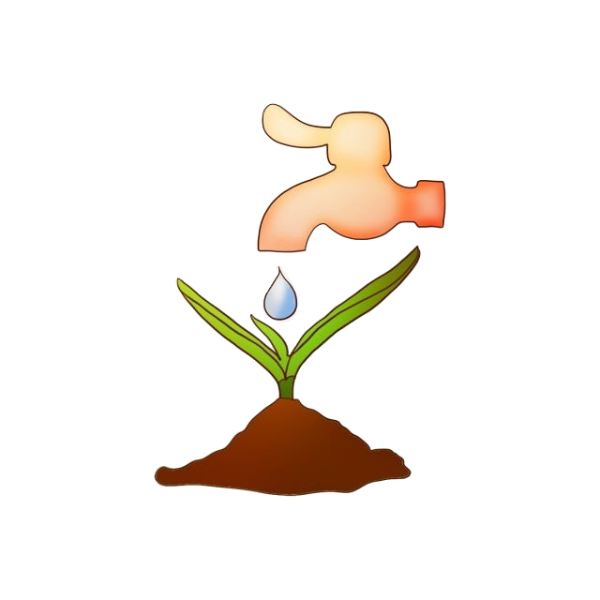Soil microorganisms are pivotal in maintaining soil health and ecosystem functionality. Their activities, including nutrient cycling, organic matter decomposition, and plant growth promotion, are intricately linked to soil moisture levels. Understanding how varying water conditions influence these microbial communities is essential for sustainable land management and agriculture.
Soil Moisture and Microbial Activity
Soil moisture is a critical determinant of microbial activity. At intermediate moisture levels, microbial respiration is typically at its peak, facilitating efficient nutrient cycling. However, both excessive and insufficient moisture can hinder microbial functions. Excess water can lead to anaerobic conditions, reducing oxygen availability and impeding aerobic microbial processes. Conversely, drought conditions can limit microbial activity due to reduced substrate availability and increased osmotic stress.
Microbial Community Composition Under Varying Moisture
Water availability significantly influences the composition of soil microbial communities. Drought conditions often favor desiccation-resistant microbes, such as Actinobacteria, which can form spores to withstand dry periods. In contrast, wet conditions promote the proliferation of microbes like Proteobacteria, which are more sensitive to desiccation but thrive in moist environments.
Implications for Soil Fertility and Ecosystem Services
The structure and function of microbial communities directly affect soil fertility and ecosystem services. For instance, changes in microbial diversity and composition can alter nitrogen cycling processes, influencing plant nutrient availability. Additionally, shifts in microbial populations can impact the breakdown of organic matter, affecting soil organic carbon stocks and overall soil health.
Conclusion
Soil microorganisms are highly responsive to changes in water availability. Both drought and excessive moisture can disrupt microbial communities, leading to altered soil functions. Therefore, managing soil moisture through practices like irrigation, drainage, and organic matter addition is crucial for maintaining healthy microbial ecosystems and ensuring sustainable soil productivity.
References
1. Xu, L., Baldocchi, D., & Tang, J. (2004). How soil moisture, rain pulses, and growth alter the response of ecosystem respiration and temperature. Global Biogeochemical Cycles, 18.
2. Siebielec, G., et al. (2020). Effects of Abiotic Stress on Soil Microbiome. Frontiers in Microbiology. Retrieved from https://pmc.ncbi.nlm.nih.gov/articles/PMC8396473/
3. Taketani, R. G., et al. (2017). The role of water in plant-microbe interactions. Frontiers in Microbiology. Retrieved from https://pmc.ncbi.nlm.nih.gov/articles/PMC5849256/
4. Fierer, N., et al. (2007). Effect of Alteration in Precipitation Amount on Soil Microbial Community in a Semi-Arid Grassland. Frontiers in Microbiology. Retrieved from
https://www.frontiersin.org/journals/microbiology/articles/10.3389/fmicb.2022.842446/full
5. Schimel, J. P., et al. (2007). Drought Legacy Effects on the Composition of Soil Fungal and Prokaryote Communities. Frontiers in Microbiology. Retrieved from
https://www.frontiersin.org/journals/microbiology/articles/10.3389/fmicb.2018.00294/full
6. Manzoni, S., et al. (2014). Soil moisture effects on microbial activity and community structure. Soil Biology and Biochemistry, 69, 1-14.
7. Borken, W., & Matzner, E. (2009). Environmental factors controlling the microbial decomposition of organic matter in soils. Soil Biology and Biochemistry, 41(10), 1978-1987.
8. Garcia-Pichel, F., et al. (2003). Soil compartment is a major determinant of the impact of simulated rainfall on desert microbiota. Environmental Microbiology, 18(2), 406-417.
9. Schimel, J. P., et al. (1999). Soil chemical properties affect the reaction of forest soil bacteria to drought and rewetting stress. Annals of Microbiology, 49(3), 263-269.
10. Harris, J. K. (1981). Acidobacteria, a phylum of bacteria. Microbiological Reviews, 45(2), 168-179.
11. Hodge, A., et al. (2000). Soil available nitrogen regulates the composition of microbial communities. Soil Biology and Biochemistry, 32(3), 287-297.
12. Rudgers, J. A., et al. (2020). Mismatches between plant-microbe partners induced by drought create fitness differences among microbial species. Proceedings of the National Academy of Sciences, 117(17), 9505-9513.
13. Pezeshki, S. R., & DeLaune, R. D. (2012). Soil Oxidation-Reduction in Wetlands and Its Impact on Plant Functioning. Biology, 26 July 2012.
14. Manzoni, S., et al. (2014). Soil microbiota response to drought and rewetting. Soil Biology and Biochemistry, 69, 1-14.
15. Ferrando, L., & Fernandez Scavino, A. (2015). Impact of soil flooding on microbial communities. Soil Biology and Biochemistry, 83, 1-10.
16. Bouskill, N. J., et al. (2013). The Microbial Communities of the Future. Wired. Retrieved from
https://www.wired.com/2013/02/the-microbial-communities-of-the-future
17. Aslam, M., et al. (2016). Soil compartment is a major determinant of the impact of simulated rainfall on desert microbiota. Environmental Microbiology, 18(2), 406-417.
